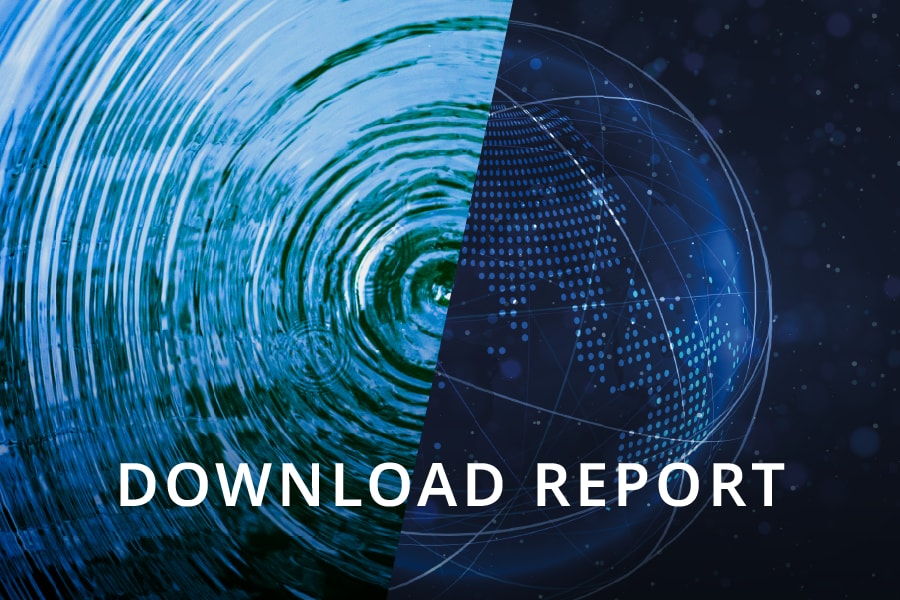Scenario Analysis and Resilience
With increasing temperatures, more frequent extreme weather events, and a shifting regulatory and technological landscape, climate change presents an urgent sustainability-related risk.
The future climate is expected to be significantly warmer, with global average temperatures projected to rise by up to 4°C by the end of the century if greenhouse gas (GHG) emissions continue at their current rate. This warming will lead to more frequent and severe weather events, such as heatwaves, storms, and heavy rainfall. Additionally, sea levels are expected to rise, causing coastal flooding and erosion.
These changes will lead to significant economic losses. The impacts will not be evenly distributed, with some regions experiencing more intense effects than others. Given these projections, it is crucial to expand our focus beyond climate mitigation and enhance resilience to these changes.

Overview of Scenario Analysis
Scenario analysis is a key tool for generational investors like Temasek to manage and assess climate-related risks and opportunities under various policies, social and technology pathways, and associated temperature outcomes. This information enables us to evaluate the implications on our portfolio of different climate scenarios and make informed investment decisions.
From a top-down perspective, the climate scenario analysis is applied as an overlay on our macroeconomic forecasts alongside other geopolitical events in our Temasek Geometric Expected Return Model (T-GEM), which uses a scenario-based approach to simulate our 20-year long-term expected returns.
From a bottom-up perspective, we apply our Climate Value Impact tool, utilising a scenario-based approach to estimate potential climate-related impacts. In addition, our internal carbon price takes into account various climate scenarios’ carbon price assumptions.
Combining both a top-down and bottom-up approach in our climate risk assessment, anchored by a consistent set of scenarios, facilitates a deeper understanding of the climate risks and opportunities our portfolio may face.
Climate Scenarios
Our most recent climate scenario analysis was carried out in 2023. We use three climate scenarios to assess the potential climate-related physical and transition risks and impacts on our portfolio.
1 Post 31 March 2025, we will be revising the associated temperature of the IPR FPS to reflect the latest developments.
The Medium Ambition scenario, which references the IPR FPS, constitutes our baseline. The IPR FPS was commissioned by the UN-supported Principles for Responsible Investment (PRI) and the climate scenarios were jointly developed by a consortium of technical partners. It receives strong endorsement from the financial sector, which it was designed for.
The IPR FPS represents a high conviction policy forecast scenario and is not a normative scenario. It possesses transparency and granularity with detailed policy and technological assumptions that allows for signposting. We regularly refresh our assessment of the baseline climate scenario to reflect latest developments. Post 31 March 2025, we will be revising the associated temperature of the IPR FPS to reflect the latest developments.
Given that the forecasts and climate sensitivities are subject to considerable uncertainty, we also model two alternative scenarios to simulate the range of plausible outcomes. First, the High Ambition Scenario simulates a net zero outcome, where the more ambitious goal set out in the Paris Agreement, to limit temperature increase to 1.5°C, is achieved. At the other end of the spectrum, the Low Ambition scenario simulates an outcome where climate policy traction is very weak such that global temperature increase rises above 4.0°C.
In our climate scenario analysis, the two climate risk impact channels assessed are physical risk and transition risk.
For physical risk, we apply a top-down approach to assess impact on GDP growth and inflation. This includes assessing acute risks such as extreme weather events and chronic risks such as the consequences of long-term shifts in climate patterns on productivity. For transition risk, we apply top-down and bottom-up approaches. At the country level, we assess the impact of carbon taxes on government revenues and take into account second-order impacts. This includes three-channel fiscal recycling of carbon tax revenues (personal tax cuts, investments, and debt reduction) and monetary policy response to changes in growth and inflation.
Similarly, from a bottom-up perspective, on top of the demand creation and destruction effects that carbon taxes elicit, we consider second-order impacts via company responses. This includes abatement, cost pass-through, and competition effects. The incorporation of second-order impacts enhances the realism of the simulations.
We recognise the trade-off between transition risks in the shorter term and physical risks in the longer term. While greater policy action may increase transition risks in the shorter term, this will reduce the magnitude of physical risks in the longer term. As a result, we adopt differing time horizons for the two categories of risk. For physical risks, we consider up to 2050 as short term and 2050–2100 as long term. For transition risks, we consider a five-year time horizon as short term, a 10-year time horizon as medium term, and a 20-year time horizon as long term. However, as implied by the differing time frames adopted for physical and transition risks, we generally expect the effects of climate-related transition risks to occur across a shorter time horizon, over the next 20 years, and the effects of climate-related physical risks to occur across a comparatively longer time horizon, up until 2100.
As a generational investor, Temasek closely monitors climate-related risks and opportunities across different time horizons by incorporating climate scenario analysis in our investment process and expected returns simulations. Our financial discipline in maintaining a strong balance sheet gives us the investment flexibility to reshape and rebalance our investment holdings as we build a resilient portfolio and deliver sustainable returns over the long term.
Using the risk inputs we assess as part of our scenario analysis, we mapped out the climate risk impact channels in further detail.
Climate Value Impact Assessment
As part of Temasek’s ongoing risk monitoring initiatives under our Organisational Risk Management Framework, the climate resilience of our portfolio is also assessed on an annual basis using a bottom-up approach, where the overall value impact contribution from individual portfolio companies is considered.
The climate value impact assessment focuses on direct investments from our listed portfolio and our 20 largest unlisted assets by value (hereafter referred to as “Temasek’s aggregated portfolio”). Together, these investments represent over 75% of our direct investments. We demonstrate the expected valuation impact of the IPR FPS scenario on Temasek’s aggregated portfolio. The impact is further broken down into channels, which indicate how transition and physical climate impacts are transmitted from changes in physical climate, policy, and technology to the financial performance of companies.
Modelling Framework
In assessing the climate resilience of Temasek’s aggregated portfolio using a bottom-up approach, we follow a modelling framework that starts by adopting a consistent set of climate scenarios as per the top-down approach, factoring in economic, energy system, and climate variables. It then analyses how economic shocks under different scenarios would impact the annual earnings of our assets, considering a time horizon of up to 2050, to project changes in asset value.
The model accounts for company-specific characteristics, such as the markets in which the company operates, revenue segmentation, and emissions intensity. In simulating the company’s response to shocks, the model considers the adoption of economically optimal abatement opportunities, and captures the effects of competition dynamics, such as changes in market share and cost pass-through to consumers.
The output from the model includes changes in the current value of the company under the selected climate scenario, disaggregated into impact channels. This supports the identification of climate risk and opportunity drivers at portfolio, sector, region, and company level.
Scenario Analysis Results and Insights
The modelling outputs showing the indicative assessment of climate adjusted value impact are illustrated in the chart below.
Valuation Impact for Temasek’s Aggregated Portfolio Under IPR FPS, by Physical and Transition Impact Channels
(as at 31 March 2025)
The results demonstrate that the expected overall valuation impact of climate change on Temasek’s aggregated portfolio, considering physical and transition driven economic shocks up to 2050, is broadly neutral under the IPR FPS scenario.
Negative impacts to the climate adjusted value are largely driven by direct carbon costs imposed on our operating companies in transition-sensitive sectors, such as transportation and utilities. However, companies may be able to offset these effects by passing the carbon costs to customers or taking market share from more emission-intensive competitors, or both.
It is important to note that limitations remain in climate scenario modelling, including potential gaps in the quality, availability, and scope of climate data for particular regions and sectors.
Proxies may be employed to address such gaps, which limits the precision of analysis. Accurately modelling the impact from low-carbon technologies is a further challenge given inherent technological uncertainty. Additionally, the results from climate scenario analysis are sensitive to the baseline scenario employed.
Spotlight on Temasek’s Internal Carbon Price (ICP)
Temasek set an initial ICP of US$42 per tCO2e in 2021 to embed the cost of carbon in our investment and operating decisions, and to further align our portfolio and business to our net zero target. This was subsequently increased to US$50 per tCO2e in 2022 and to US$65 per tCO2e in 2024, with a view for the carbon price to reach US$100 per tCO2e by 2030. A review of the ICP is performed every two years that takes into account the carbon price projections by international bodies.
Our ICP serves various purposes. It not only informs our transition risk analysis, thereby strengthening portfolio resilience, but also helps us build a forward-looking portfolio in alignment with the global ambition for net zero.
Furthermore, our ICP has been incorporated into various internal management tools in an effort to align our institutional practices and encourage climate-aligned decisions and behaviour among our employees.
| Objectives | Related use cases |
|---|---|
Portfolio Resilience Appropriately identify and account for transition risk in investment decisions to ensure acceptable exposure at asset and portfolio level |
|
Portfolio Alignment Increasingly align our portfolio to help meet our net carbon emissions target of half the 2010 levels by 2030 and net zero carbon emissions by 2050 |
|
Institutional/Ecosystem Alignment Encourage behaviours and outcomes across the organisation that lead to progressive emissions reductions |
|
Impact on Expected Returns
Our Central Scenario incorporates the Medium Ambition Climate Change Scenario and offers higher 20-year expected returns for the Temasek Portfolio compared to the Low Ambition Climate Change Scenario, but lower 20-year expected returns compared to the High Ambition Climate Change Scenario, where there is concerted effort and strong actions to mitigate climate change and carbon emissions for a more liveable world. These results reaffirm our belief in the importance of looking beyond portfolio decarbonisation and working to drive real economy carbon reduction through collaboration on climate action with our portfolio companies and our wider ecosystem.
It is important to recognise that whilst T-GEM simulates a range of possible returns for our portfolio over a 20-year period, these should not be viewed as predictions of actual outcomes. Rather, the climate assumptions incorporated into T-GEM assist us in understanding the potential implications of different climate scenarios and importance of building a resilient portfolio. There are several significant areas of uncertainty that we consider in assessing the overall resilience of our strategy to the climate-related risks identified and the potential impact on expected returns. This includes the complex nature of climate scenario analysis, which requires assumptions to be made on the inputs used, as well as continuous updates as data becomes more robust.
In addition, the extended time horizon of scenario analysis increases uncertainty regarding the assumptions relied upon. Our assessment also depends on and makes assumptions around the response of companies to conditions or circumstances of the climate scenarios considered. Combined, these significant uncertainties increase the degree of judgement necessary to assess our climate resilience.


